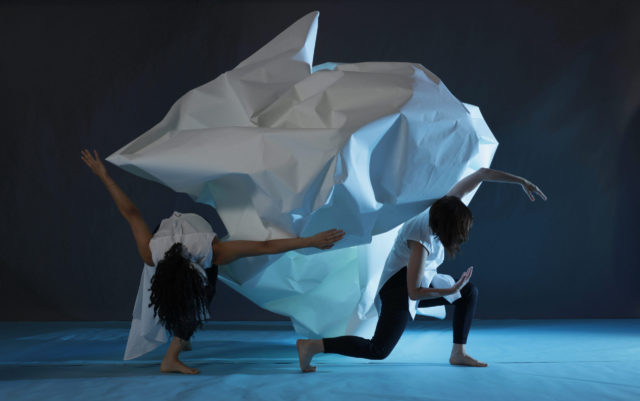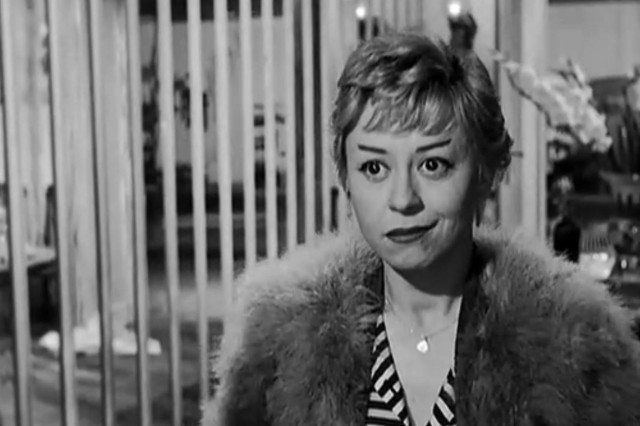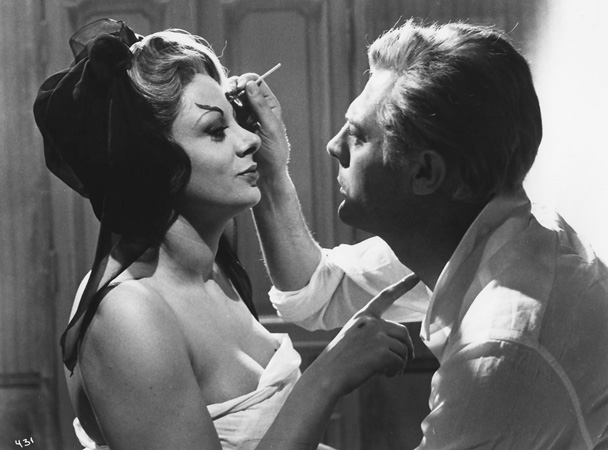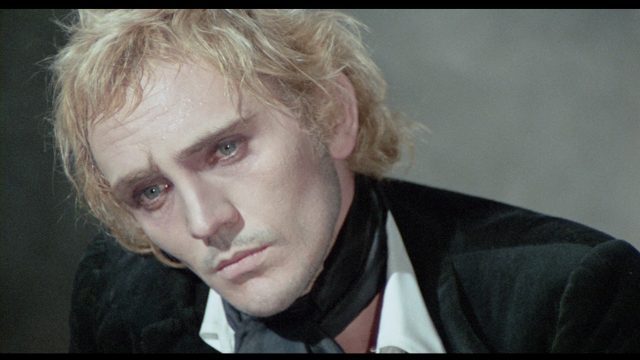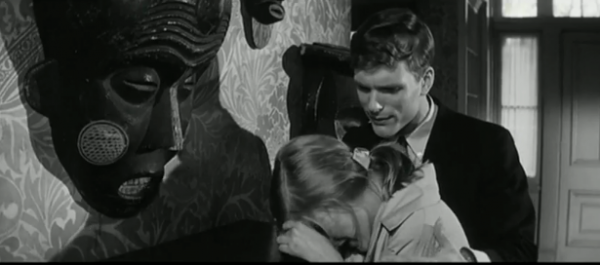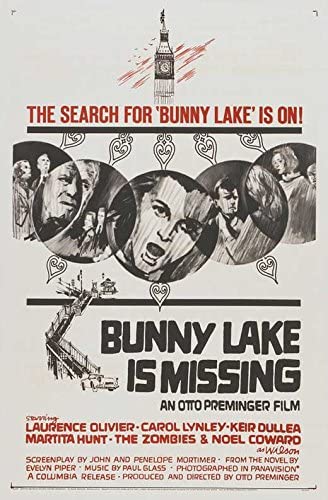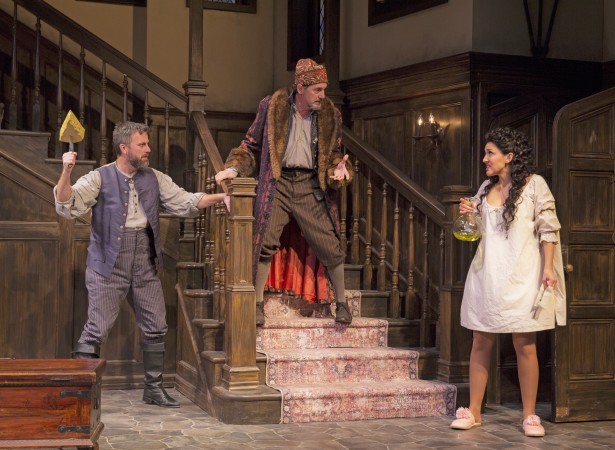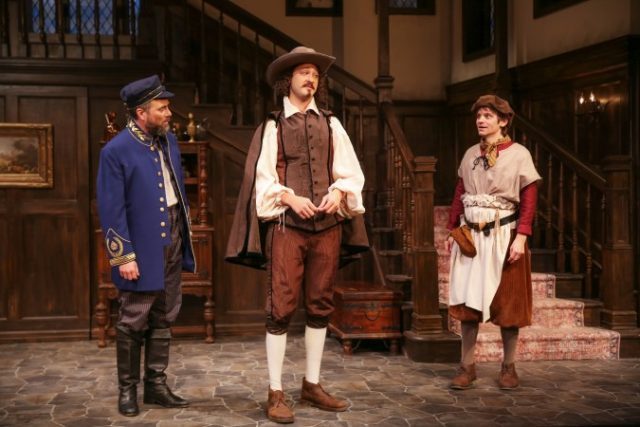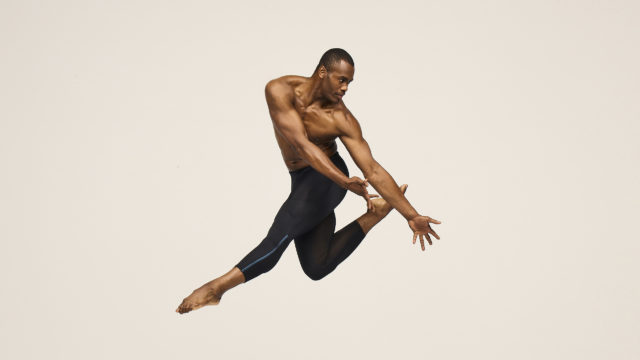
Jamar Roberts will perform new solo on December 9 in final appearance as Ailey dancer (photo by Paul Kolnik)
ALVIN AILEY AMERICAN DANCE THEATER
New York City Center
130 West 56th St. between Sixth & Seventh Aves.
December 1-19, $29-$159
212-581-1212
www.alvinailey.org
www.nycitycenter.org
Jamar Roberts has spent nearly half his life with Alvin Ailey. First with Ailey II, then with Alvin Ailey American Dance Theater since 2002, the thirty-nine-year-old Miami-born Bessie Award winner was named the company’s first resident choreographer in 2019; has created such works as 2016’s Gêmeos, 2017’s Members Don’t Get Weary, 2019’s Ode, and 2020’s A Jam Session for Troubling Times, which was filmed on the roof of the troupe’s midtown studio at the Joan Weill Center for Dance.
During the pandemic, Roberts also created two short films for the Guggenheim’s Works & Process series, the fierce and unrelenting solo Cooped and A Chronicle of a Pivot at a Point in Time, a piece for five dancers in the corner of a studio, their shadows echoing hauntingly against one wall; both feature a tense electronic score by David Watson. In addition, Roberts debuted his fifteen-minute solo, Morani/Mungu (Black Warrior/Black God), at City Center’s 2021 digital Fall for Dance program.
On December 9, as part of AAADT’s annual winter season at City Center, Roberts will perform for the final time; he is retiring from dancing with the six-minute solo You Are the Golden Hour That Would Soon Evanesce, accompanied by pianist and visual artist Jason Moran playing his composition “Only the Shadow Knows (Honey).” On December 3, Ailey premiered Roberts’s mesmerizing Holding Space, which was first seen virtually. The twenty-four-minute piece for thirteen dancers, set to an electronic score by Canadian musician Tim Hecker and featuring scenic design and costumes by Roberts, explores healing and presence and is highlighted by a movable onstage open cube in which dancers perform brief solos. At the debut, I was sitting across the aisle from Roberts, whose eyes were zeroed in on the stage every second.
I spoke with the easily likable Roberts, who smiles and laughs often, over Zoom about his transition from dancer to choreographer, the future of virtual presentations, his newfound love of jazz, and more.
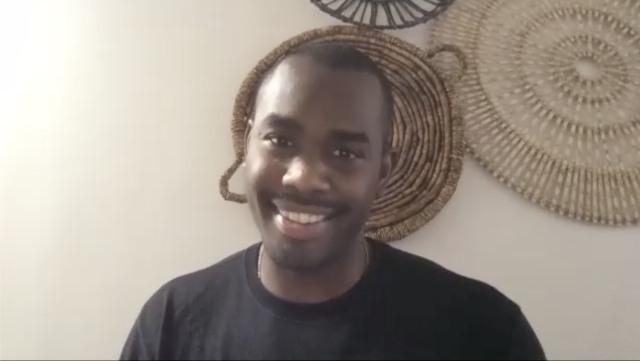
Jamar Roberts discusses the pandemic and his career during Zoom interview (screenshot by twi-ny/mdr)
twi-ny: When you started at Ailey, did you ever anticipate transitioning to choreography? Not all dancers want to become choreographers.
jamar roberts: No, not at all. When I got into the Ailey company, I wanted to be a fashion designer; that was the main thing on my list, and then there were three or four other things. Choreography was, like, number ten.
twi-ny: What were some of the others?
jr: Illustrator, animator, meteorologist, those kinds of things.
twi-ny: So what was your initial feeling when you were named the first resident choreographer in the company’s history?
jr: I was like, cool, only because they had hinted at it before, so I kind of felt it coming, but it didn’t really hit or register until I was well into my second piece.
twi-ny: What’s it like choreographing for your friends and colleagues?
jr: Oh, it’s great. I don’t really like the hierarchy, you know, where it’s like, I am the choreographer, I sit in the chair, you listen to me and you do what I say. I don’t really like that, so I get on the floor and I do the movements too, so for me it’s great because it feels like more of a collaborative effort, that we’re all in it trying to make the same thing. I always tell them I know everything and I know nothing at the same time. I can get the conversation started, but by the end of the day, you’re going to be the ones onstage dancing the work, so your input is essential.
twi-ny: During the pandemic you’ve been incredibly active and prolific. When did you first decide to forge ahead with virtual works?
jr: I didn’t make a decision; I would just get a commission and I would accept it. So I guess the answer to that would be when I got the first commission, which was the Guggenheim Works & Process virtual commission [Cooped.]
twi-ny: For that commission, you’re performer, choreographer, and film director. You really threw yourself right into the whole thing.
jr: Yeah, but if you make something, you’re going to have an opinion about how it should look, what environment it should be in, so the director part for me wasn’t anything more special or significant than the way that you would direct things in the studio, when you make a dance for the theater.
twi-ny: You could have put the iPhone somewhere else and not captured the same claustrophobic effect of confinement.
jr: It’s true. I think that artmaking is part, what, 20% skill, and the rest is taste; the majority of it is taste, and problem solving, and if you’re a person that’s making things and you’re relatively bright and you have a pretty good understanding of what works and what doesn’t — and some of us have that to varying degrees — you just trust your instincts and you go. I am no filmmaker, although I appreciate the sentiment; I’m not a director, but I’m an artist, I’m a person who likes creating, I’m a person who likes to see what I like to see, and if other people like to see what my eye is drawn to, then that’s great. But I’m not really here to put a title on anything. I’m just here to enjoy what it is I’m doing and feel good about it when it’s done.
twi-ny: The reaction to Cooped and so many of your other works has been phenomenal; people do want to see what you want to see. You followed Cooped with Morani/Mungu (Black Warrior/Black God), an intimate solo, and then the exhilarating Jam Session for Troubling Times, which you filmed with a team of dancers outside, although the dancers weren’t allowed to touch each other. What was it like to finally work with dancers, get out in the fresh air, yet still have this barrier, this space between each performer?
jr: When somebody tells you that you have to make a dance but they can’t touch each other, immediately it’s the end of discussion. You just have to deal with the cards you’ve been dealt. I guess at that point I just figured out, well, how am I going to do this. I didn’t really think too much about it because it was what it was.
twi-ny: It was so exciting to watch because just seeing people dance outside in this space was freeing for the viewer too. Your work during the pandemic was very much about space: Cooped is claustrophobic, Jam Session is on the Ailey rooftop, Chronicle has the dancers in a corner, and then with Holding Space you actually have a huge open cage that’s both threatening and liberating. Did these spatial elements progress naturally, or were you looking for confining imagery?
jr: The only one where I specifically looked for confining imagery was for the film Cooped. Everything else happened naturally. I think that because it happened naturally speaks to the kind of person I am. I know some people had a hard time during quarantine, stuck in their apartments, but I actually found it quite . . . great. There’s an aspect of my personality that feels very comfortable at home in confined spaces. I’m also six-four, so I’m always forced into confined spaces, like cars or airplanes. I don’t know, maybe subconsciously there’s a thing there.
twi-ny: Well, I’m much shorter than you and I don’t feel quite as confined, I think, as you do. What part of the city were you quarantining in?
jr: I was in Inwood. We were on tour in Texas in March 2020, and it got shut down. I was at home for about a week and then went to St. Louis to try to ride it out with some friends there. Cooped was made in the basement of their home. So the majority of it was in Missouri, and back and forth to New York.
twi-ny: A lot of your work, prepandemic, pre–George Floyd, and then after, is about the Black body, gun violence, racial injustice, and how Covid-19 disproportionately impacted communities of color while also celebrating, as you’ve said, “strength, beauty, and resilience.” How do you achieve this without expressing these elements explicitly?
jr: I think it’s because I’m a nice guy. [smiles] I mean, when the environment and the things that are going on around you are so heavy, you don’t have to say that much. For me, it really becomes about setting the tone for the moment and then on top of that just doing what dance does, which is inspire. Do you know what I mean? We inspire through images, beautiful images, beautiful movement. The rest is baked into the moment that we’re in.
twi-ny: On December ninth, you’ll be performing for what will be the final time, dancing You Are the Golden Hour That Would Soon Evanesce. Why did you decide now is the right time?
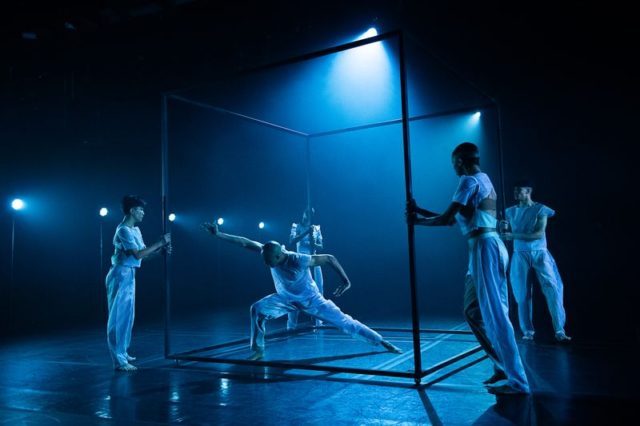
Jamar Roberts’s Holding Space is highlight of Ailey winter season at City Center (photo by Christopher Duggan)
jr: I decided now because my body is at the point where it can no longer keep up with the demands of a full-time professional dance career.
twi-ny: How do you think you’ll feel when it’s over? Are you going to be relieved, excited, sad, or do you have no idea?
jr: I don’t really think it’s the closing of a chapter; I think it’s the opening of a new one. This’ll probably be only the second time that I’ve ever been seen onstage doing my own work. I don’t know, I definitely won’t be crying, and I won’t feel sad at all.
twi-ny: As we come out of the lockdown and theaters are open and dancers can touch each other, do you anticipate making future virtual works or will you be sticking to in-person presentations?
jr: Why not both? I hope in the future they’re not called virtual pieces anymore, that they’ll just be called films. Because the word virtual makes it sound like it’s the B-plan. I think it’s all the same. You can have a virtual piece onstage — just throw a camera on the dancers as they’re dancing and have that be displayed. It’s all tools in the same bag; it doesn’t have to be one or the other. Yeah, I think dance has to think a little big bigger?
twi-ny: When you’re not involved with dance, and it seems like you’re always involved with dance, if you have any free time, what do you do?
jr: I try to connect with my friends and the people I love. I try to be a normal person and go to the clubs. I go to dinner and go and see shows. This past summer — summer in New York is always great because you can go and see so much music, jazz festivals in particular, jazz clubs, seeing live music and other performers. I try to keep my head in what’s going on.
twi-ny: You weren’t always a jazz fan, were you? [Roberts has set pieces to compositions by Moran, John Coltrane, Don Pullen, Nina Simone, Charlie Parker, and Dizzy Gillespie in addition to Fela Kuti and the Last Poets.]
jr: No, I grew up with Brandy, and Britney Spears, and Destiny’s Child, Beyoncé, Alanis Morissette, Björk, and all that music. My family never played jazz in the house; it was probably some gospel music, old sermons from the ’50s, and that’s it. But I had to learn it, I had to teach myself that stuff because I was dancing these works that Alvin Ailey choreographed, and they were all to jazz music. And if I wanted to be able to interpret that work authentically, I had to know what the hell it is I was listening to, where it came from, what was happening at the time in which it was made, just so that I could as a performer come across as authentic, with conviction. I went down the rabbit hole, I guess.

